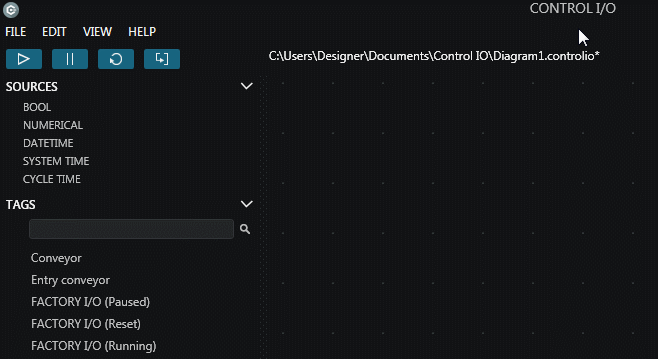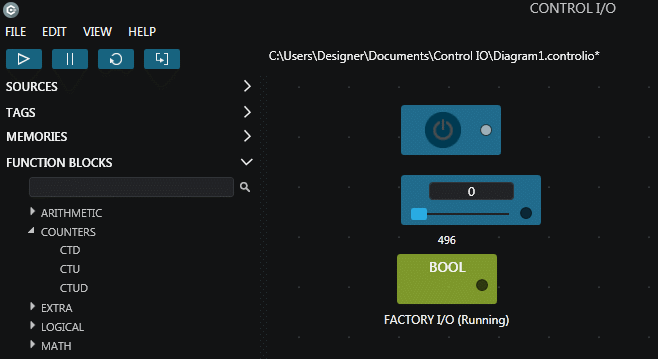Creating a Diagram¶
If you haven't followed the Getting Started guide we recommend you to acquaint yourself with the basics by following it. It will guide you on how to create a simple diagram, making the contents of this page much easier to understand.
A diagram is made of blocks connected by links. Blocks are made of input and output sockets and links always connect output sockets from one node to inputs of another. You create a diagram by Dragging blocks from the Blocks Palette into the canvas, alternatively, you may Double Left-click on a block in the palette to create it.

After placing and arranging blocks, you create links between them by clicking on a block's output socket and dragging it to the target input socket. Note that, you can only create links between compatible data types, for example, you cannot link a Boolean value to a block's socket which expects a number (integer of floating). Although, when a blocks's input socket expects a numerical value it will accept any numerical type (integer or float).

To delete a link, Left-click and press Del.
Loops¶
You can't create loops by linking output to input sockets. To create a feedback you must use memory blocks with the same address. When several memory blocks share the same address, an upstream memory will get the value of the most downstream one on the next diagram update cycle. On the following example, the diagram cycle time was set to 1000 ms (1 second) to make this behavior easier to observe.
